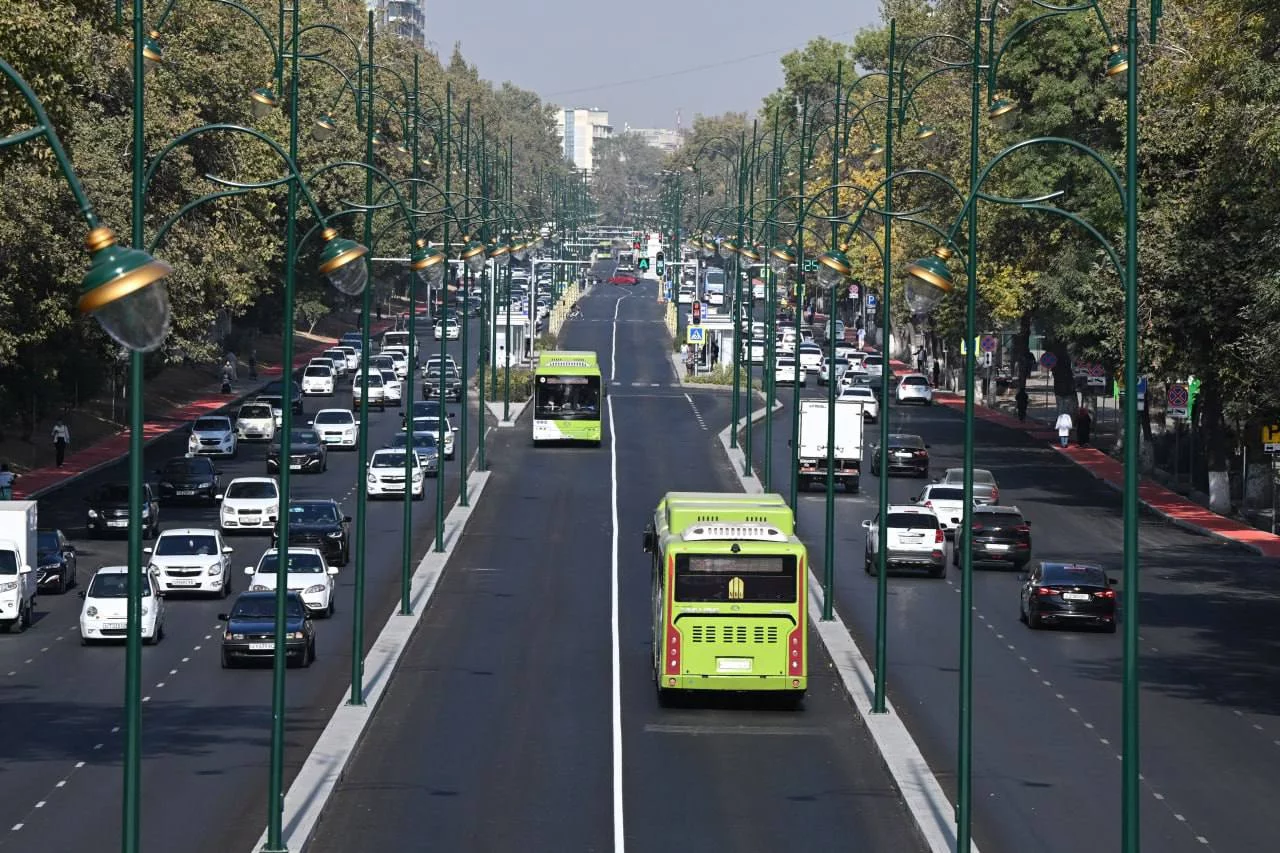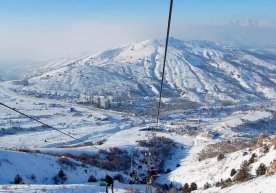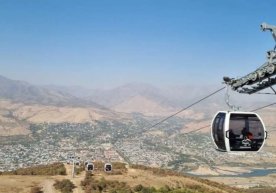
While familiarizing himself with the process of road infrastructure renewal in Tashkent, President Shavkat Mirziyoyev spoke about the BRT system implemented in the city center - separate lanes for buses. The head of state emphasized that this system can significantly reduce traffic congestion in the capital and create convenient, affordable, and fast public transport for the population.
"If such separate roads are increased, people will stop driving their personal cars on weekdays. The bus will be fast, safe, and affordable. "He uses his car only on weekends, taking his children on trips," the President said during an inspection of the new system on Shota Rustaveli Street.
According to the head of state, this road will also serve as a model for projects implemented on other streets. The khokim of the city of Tashkent, Shavkat Umurzakov, informed the President in detail about the new system. According to him, separate bicycle and pedestrian lanes have been created on both sides of the road, more than 14 thousand trees have been planted, and the entire drainage system has been updated.
"The bus moves only in the middle of the road. As a result, the speed of public transport has doubled," the mayor said.
According to the analysis of the "Uzbekistan 24" TV channel, the BRT system is a model that has proven itself in many major cities of the world, allowing millions of people to transport passengers quickly and cheaply. In such megacities as Bogota, Istanbul, Beijing, and Mexico City, traffic congestion has significantly decreased thanks to this system.
The first BRT corridor in Tashkent was implemented on the 7-kilometer section of Shota Rustaveli Street from Mirabad to Choshtepa. Of the 10 lanes, 6 are for cars, 2 are for buses, and 2 are for stopping.
Within the framework of the project worth 19.2 million dollars, 21 new bus stops, 463 "smart" traffic lights, and an intelligent transport system were installed.
In the coming years, bus roads with a total length of 51 kilometers will be built on 10 more routes. According to the project presented to the President, the SDG system will also be implemented on Shahrisabz, Amir Temur, Yangi Sergeli, Makhtumkuli, and Nurafshon streets by 2030.
It is planned to allocate 126 million dollars for this purpose. When the system is fully operational, the speed of buses in Tashkent is expected to increase from 18 km/h to 23 km/h, and the operating interval will be reduced from 20 minutes to 8-10 minutes.
Thus, a modern and convenient form of public transport in the capital - the BRT system - is expected to raise the culture of movement and the quality of life to a new level.
Read “Zamin” on Telegram!Users of Меҳмон are not allowed to comment this publication.














